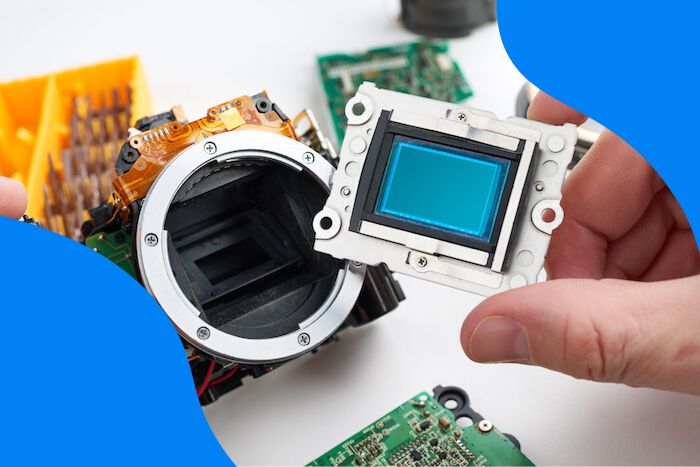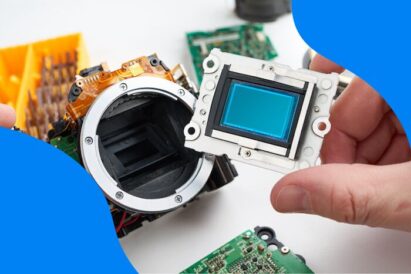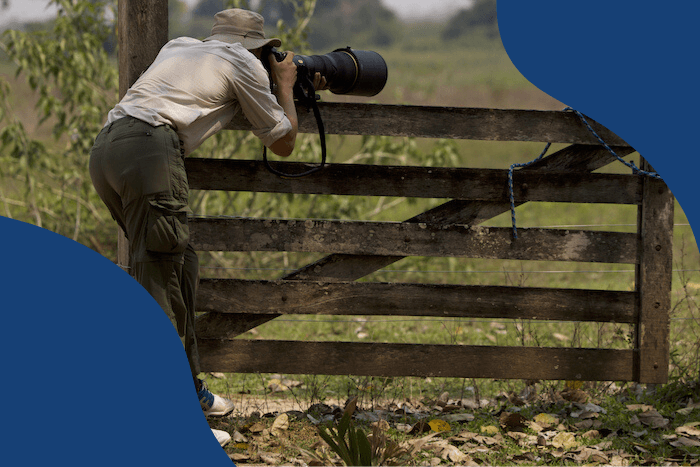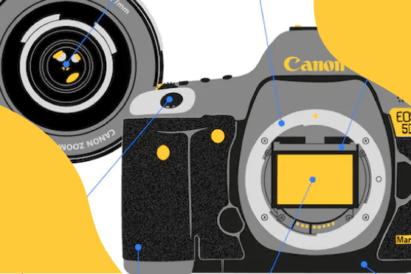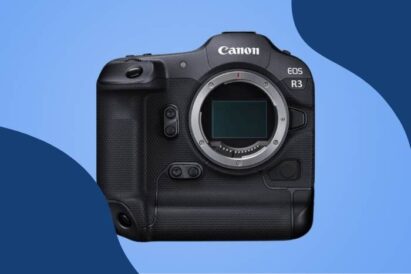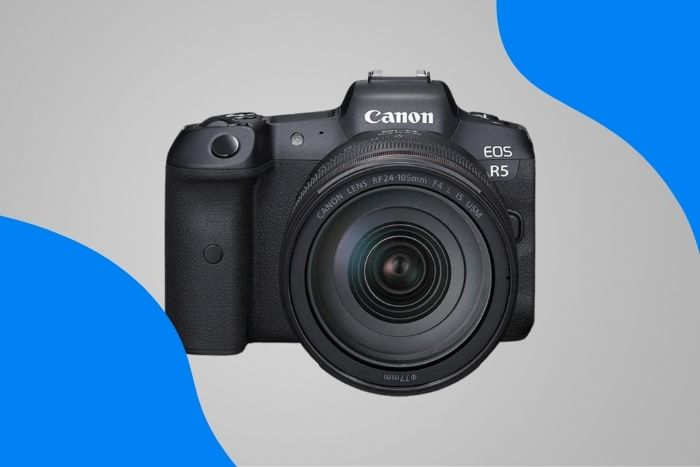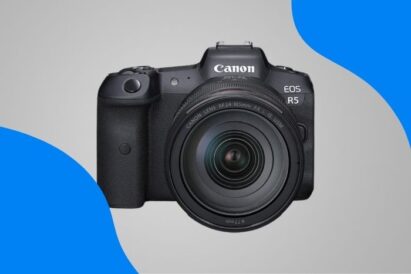If you look at a list of Canon cameras or the type of Canon cameras out there, naming conventions can be confusing. Some have different names in different parts of the world. And a higher number sometimes means better and sometimes worse!
So let’s try and simplify things. First, our article is only about full frame and APS-C models currently in production in the EOS range. We don’t include Canon PowerShot or rangefinder cameras.
EOS stands for Electro-Optical System, and all EOS bodies are now Digital Single-Lens Reflex (DSLR) or mirrorless cameras. Within this, you get entry-level, mid-level, and pro bodies. But there are more than three series of cameras!

Type of Canon Cameras: DSLR and Mirrorless Ranges
Within the DSLR line-up, there are four ranges:
- Canon EOS XD cameras are generally (but not always) pro-level models with full frame sensors, like the 6D.
- Canon EOS XXD cameras are mid-level models with APS-C sensors, like the 90D.
- Canon EOS XXXD cameras are entry-level models with APS-C sensors, like the 850D( Rebel T8i).
- Canon EOS XXXXD cameras are entry-level models with APS-C sensors, like the 4000D (Rebel T100).
Note that Canon EOS XXXD and XXXXD models are called “Rebel” in the US and “Kiss” in Asia.

There are four ranges of Canon mirrorless cameras:
- Canon EOS RX cameras are generally (but not always) full frame models with lower numbers or a letter. It’s intended for pros or enthusiasts. Examples are the RP and the R3.
- Canon EOS RXX cameras are entry-level APS-C models, like the R10.
- Canon EOS MX cameras are entry-level APS-C models, like the M5.
- Canon EOS MXX cameras are entry-level APS-C models, like the M50.
The “R” is the initial letter of the first word in Canon’s development concept for the range (Reimagine Optical Excellence).
The “M” stands for Mobility. The “X” is usually a number. But it’s a letter in the Canon RP. The “P” stands for Popular, meaning for everyone.
How Canon Model Numbers Work
All Canon DSLR and mirrorless interchangeable-lens cameras have the prefix EOS in their names. Beyond that, it gets complicated. Here’s our cut-out-and-keep guide to all the Canon naming conventions. And all the exceptions!
Canon DSLR Cameras
All the DSLRs in the Canon range have the letter “D” in the name. And the full frame models all have single digits.
Now that the crop-sensor 7D Mark II has been discontinued, all the single-digit models are full frame. The higher the number, the lower the specification. The flagship product is the Canon EOS 1D X Mark III.
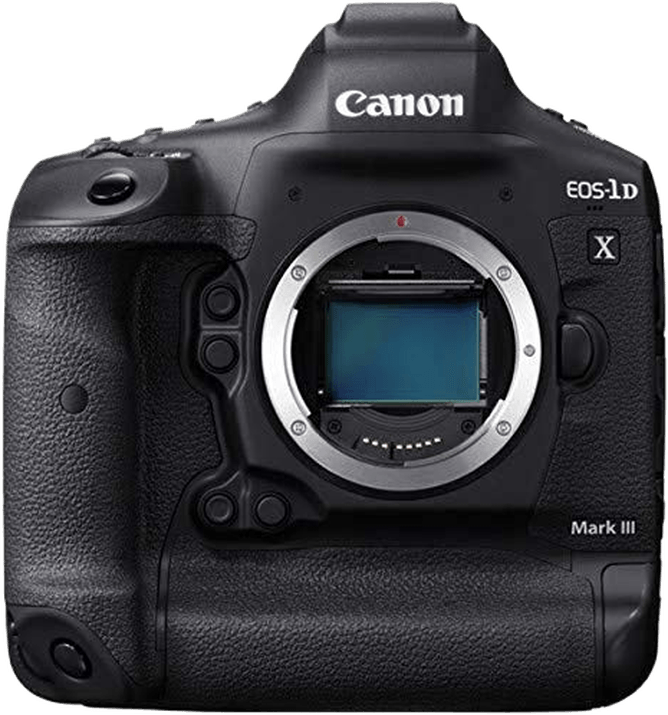
Canon EOS 1D X Mark III
Canon’s entry-level and mid-level cameras all have APS-C size sensors. These are in the Canon EOS XXD, XXXD, and XXXXD ranges. As the number of digits goes up, the level of sophistication goes down.
But a higher number now means a higher spec within each range. That means a 90D beats a 77D. But a 77D beats an 850D (Rebel T8i). Crazy, right?
Like Nikon, Canon is gradually replacing DSLRs with mirrorless models. That means there won’t be any more DSLR cameras or lenses introduced in the future unless something dramatic happens.
EOS XD Model Names
In the one-digit Canon EOS XD range, models are ranked by performance and image quality. The lowest number is the best, and the higher numbers are less advanced.
Updates between major model releases are given a different “Mark” with the next number in the sequence. That means the EOS 1D X Mark III is the third and most recent version of the basic design of the EOS 1D X.
The “X” represents the crossover” between two product lines—the 1D and the old 1Ds lines. The “X” also means “extreme.” And it’s the Roman numeral for the 10th generation of Canon pro cameras. (This line started with the F1 of the ’70s.)

The EOS 6D is an entry-level body with a full frame sensor. That means it’s the only model in the XD range with Scene modes that beginners might use, such as Portrait, Landscape, and Macro.
The other cameras are suitable for enthusiasts or professionals. Although they don’t provide high resolution, they have rapid focus and high frame rates for wildlife and sports.
The EOS 1D X Mark II boasts a continuous shooting speed of 14 fps (frames per second). This is pretty decent for a DSLR. It also offers fast, accurate focusing because of the high number of focusing points and Dual Pixel AF.
The EOS 5D Mark IV and 6D Mark II are smaller without an integrated grip. And they’re less expensive, but still not suitable for beginners. For a start, they need too much hands-on experience to make the most of the AF systems.
EOS XXD Model Names
Canon mid-level cameras all have two numbers plus the letter “D” in their names. The only ones still in production are the Canon EOS 77D and the Canon EOS 90D.
Mid-level cameras provide a few pro features. These include the LCD on the top plate, extra dedicated buttons to avoid navigating menus, and an extra rear control dial. But they still have entry-level options like Scene modes.
In the Canon EOS XXD range, the numbers go in the opposite direction to the Canon EOS XD range. The higher the model number, the better and newer the camera. For example, the Canon EOS 90D is more advanced than the Canon EOS 77D.

Canon EOS 90D
EOS XXXD Model Names
The XXXD range also contains entry-level APS-C DSLRs. The naming system is the same as in the XD and XXD ranges, with higher numbers indicating better and more recent cameras.
EOS XXXXD Model Names
The only XXXXD model currently in production is the 2000D (Rebel T7). Unless you count the 9000D, which is just another name for the 77D. Are you confused yet?
Rebel Cameras
Canon’s entry-level cameras in the Canon EOS XXXD and Canon EOS XXXXD ranges fall under the popular “Rebel” brand in North and South America.
Apart from the Rebel SL3 (250D), they all have a “T” followed by a number. The higher the number, the more advanced the camera. But they’re all meant to be affordable.
The ones with an “i” at the end are the more advanced models, such as the Rebel T8i (850D). There also used to be a higher-end T6S, but Canon has discontinued that model.

DSLR Full-Frame
DSLR APS-C
- Canon EOS 77D (EOS 9000D in Japan and EOS 770D in mainland China)
- Canon EOS 90D
- Canon EOS 250D / Rebel SL3 in North America (Kiss X10 in Japan and EOS 200D Mark II in Australia and Asia)
- Canon EOS 800D / Rebel T7i in the Americas (Kiss X9i in Japan)
- Canon EOS 850D / Rebel T8i in the Americas (Kiss X10i in Japan)
- Canon EOS 2000D / Rebel T7 in the Americas (Kiss X90 in Japan and 1500D in Southeast Asia)
Canon Mirrorless Cameras
Mirrorless cameras first arrived on the market in 2008. And Canon’s first mirrorless model was the EOS M, launched in 2012.
The company has been adding more cameras and lenses to the Mirrorless Interchangeable Lens Camera (MILC) line-up ever since. You can now spend anything from a few hundred dollars to $6,000 on a Canon mirrorless camera.
The best Canon mirrorless cameras offer an advanced sensor and processor. They also have a vari-angle touch screen and an electronic viewfinder (EVF). And you can shoot in RAW and get decent battery life.
Finally, there’s also a growing range of native RF lenses you can choose from. And you can always use a mount adapter to use older Canon lenses with an EF mount.
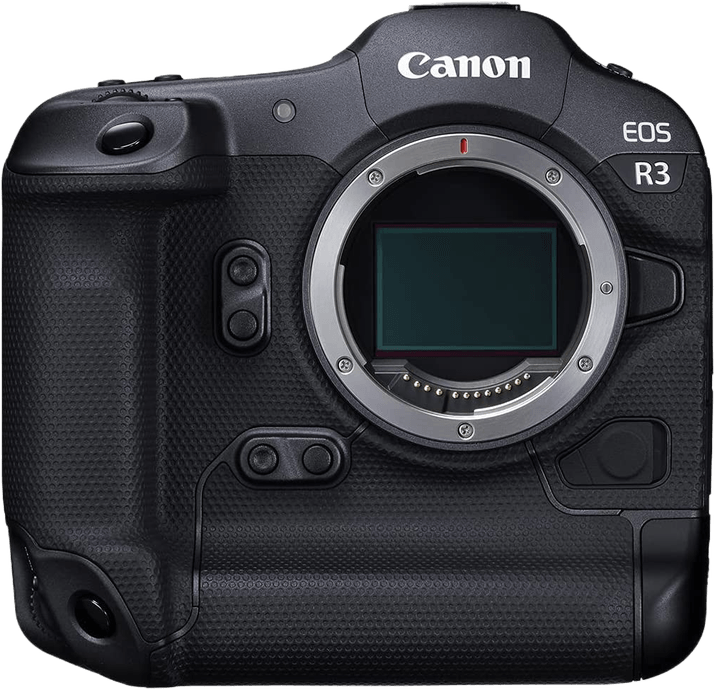
Canon EOS R3
Mirrorless Full-frame
If you’re looking for a full frame mirrorless camera, Canon offers you a choice of six. Apart from the mass-market RP, they all have an “R” followed by a single digit in the name.
Unfortunately, the number doesn’t tell you much about the target market for each camera. The upcoming Canon EOS R1 will be Canon’s flagship mirrorless model.
And the R3 is probably a better camera body than the R5 (unless you need more resolution). We have a recent Canon R3 vs R5 comparison you can check next. But the R8 officially sits between the entry-level RP and the pro-grade R6 Mark II!
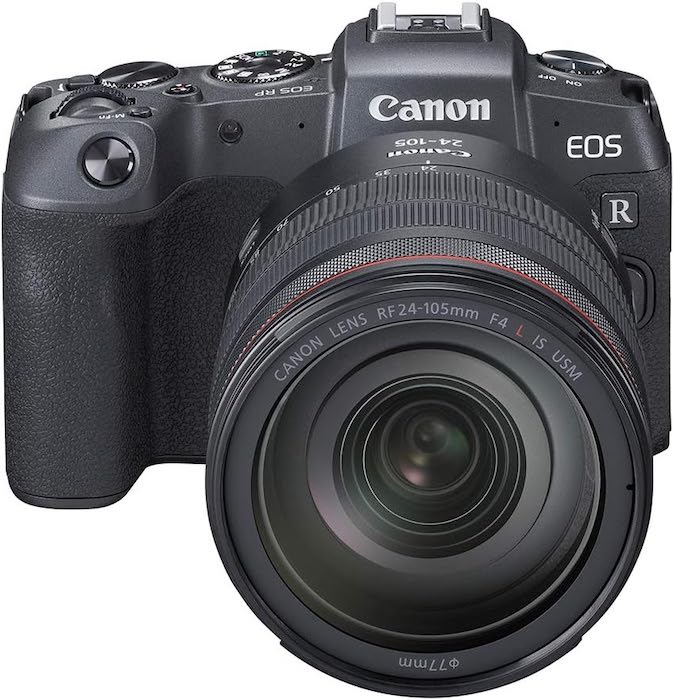
Mirrorless APS-C
Canon’s mirrorless APS-C cameras are small and light but still offer high performance. Both the R and M series cameras follow the naming conventions of Canon’s DSLRs (sort of!).
The single-digit models are more advanced than the double-digit ones.
The R7 is the best Canon camera in the mirrorless APS-C range. It has an advanced feature set and a 32 MP sensor. So it generates remarkably low levels of noise at high ISOs.
There are only two RXX cameras at the moment. But Canon will introduce more mirrorless replacements for its DSLRs with similar names. As it is, the R50 arrived later than the R10, but it doesn’t match its performance.
The M series contained older cameras released before the current R series. The only one still being made is the M50 Mark II. You can still buy the EOS M200 and the EOS M6 Mark II. But Canon has discontinued them.
And Canon doesn’t plan to introduce any more M cameras or EF-M lenses.

Canon EOS R7
Verdict
The naming conventions are complicated. So we hope this Canon cameras model list has helped clear up any confusion. Your choice is between a DSLR (with the letter “D” in the name) and a mirrorless camera (starting with the letter “R” or “M”).
The general rule is that the more advanced cameras have fewer digits in their names. But some have letters instead of numbers, and single-digit cameras can be full frame or APS-C!
Within the XD range of DSLRs, better cameras have lower numbers. But that’s not always true in the RX range of mirrorless models.
And higher numbers mean better and more recent DSLR models in the XXD, XXXD, and XXXXD ranges. But in the RXX range, the R50 is actually better than the R10, even though the launch date was later.
Type of Canon Cameras FAQs
We’ve answered typical questions about Canon’s names for its different types of cameras.
How Does Canon Name Its Cameras?
All Canon DSLR and mirrorless interchangeable-lens cameras include “EOS” in their name. DSLRs have the letter “D” in the name, such as 90D. New models in the mirrorless range all start with the letter “R.” But there are still some older M series cameras whose names start with “M.”
The best Canon cameras in the DSLR range have a single digit in their names, such as the Canon EOS 1D X Mark III. The “X” signifies the crossover between Canon’s 1D and old 1Ds product lines.
As the number of digits increases for Canon DSLRs, the level of sophistication goes down. That doesn’t apply yet in the mirrorless range, but it may in the future.

Why Do Canon Cameras Have Different Names?
The broad idea of Canon’s naming conventions is that they help guide you to the right camera for your needs. The similarities between the names should match the similarities between the cameras.
That’s true when it comes to broad categories. Interchangeable-lens cameras are called EOS, and mirrorless and DSLR models never have the same letters in their names. But there’s no way of telling the difference between full frame and APS-C cameras. There are also quite a few exceptions in the use of numbers! Some Canon EOS models are called “Rebel” in the US and “Kiss” in Asia.
How Do I Find Out What Model My Canon Camera Is?
Most Canon cameras have the model name printed on the body’s front right or top plate. But the particular “Mark” may be printed separately lower down, as it is on the Canon EOS 1D X Mark III.
What Does EOS Stand for In Cameras?
Canon’s interchangeable-lens cameras have EOS in the title. EOS stands for Electro-Optical System. It’s part of Canon’s branding for its digital SLR cameras and mirrorless camera ranges.
What Does DSLR Stand for in Cameras?
DSLR is an acronym for Digital Single-Lens Reflex. The letter “D” shows that the camera has a digital sensor. Single-lens cameras have one interchangeable lens. “Reflex” means “reflecting” or “reflection.” A reflex camera has a mirror that reflects light up to an optical viewfinder. But it flips up when you take a picture to expose the film or sensor.
What’s Next?
Now you’ve learned more about Canon camera types and names, you may be interested in the debate between Fujifilm vs Canon or Canon vs Sony mirrorless cameras. For niche Canon shooters, we also have great buying guides on Canon portrait cameras, professional Canon cameras, the best Canon for sports photography or the best Canon vlogging options or mirrorless cameras for video. We hope you find something for you!




